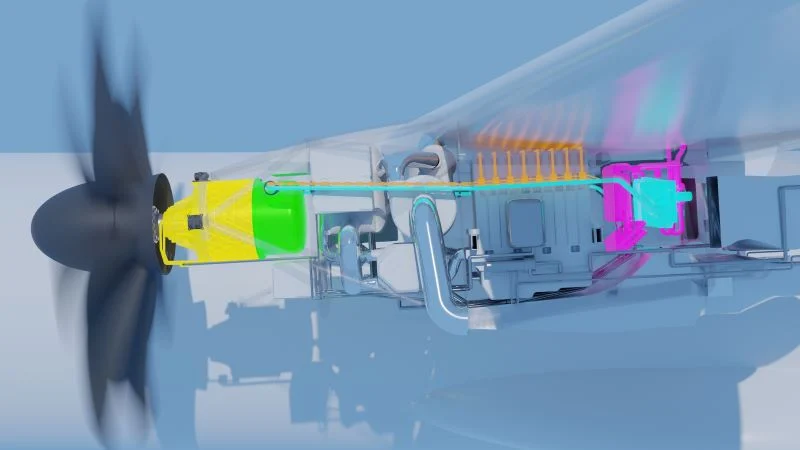As the aviation industry accelerates its shift toward sustainability, hydrogen is emerging as a promising clean fuel. But a recent announcement from Airbus suggests that it’s not just hydrogen alone that will revolutionize air travel—superconducting technologies may be the real key to unlocking high-power electric propulsion.
In this article, we explore what superconducting technologies are, how they complement hydrogen fuel, and why Airbus believes they’re essential to the future of flight.
The Rise of Hydrogen in Electric Aviation
Over the past three years, the electric aviation sector has seen growing interest in hydrogen-powered aircraft. Hydrogen boasts several advantages: it’s clean, energy-dense, and abundant. However, it also presents significant challenges—particularly in how it’s stored.
Gaseous hydrogen is the lightest element, meaning storing large amounts requires extremely high pressure—typically between 200 to 700 bars, or up to 700 times atmospheric pressure. This requires complex and costly tanks, limiting efficiency and increasing weight.
Even in the automotive sector, hydrogen fuel cell vehicles like the Toyota Mirai, which stores hydrogen at 700 bars, achieve ranges (402 miles) only slightly higher than battery EVs like the Tesla Model 3 (352 miles).
Liquid Hydrogen: Unlocking Greater Energy Density
For aviation, weight and energy density are critical. This is where liquid hydrogen becomes important.
- Density of Liquid Hydrogen: 70.8 kg/m³
- Density of Gaseous Hydrogen @700 bar: 42 kg/m³
That’s a 68% increase in energy per unit volume with liquid hydrogen. However, achieving this form requires cooling hydrogen to −253°C, a process that consumes 13–30% of the fuel’s energy, reducing the net benefit.
Despite this, liquid hydrogen offers a unique, underappreciated advantage: extremely low temperature, which opens the door to superconducting technologies.
What Are Superconducting Technologies?
In physics, a material achieves superconductivity when its electrical resistance drops to zero below a certain temperature. Conventional materials like copper only reach this state at around 35 K (−238°C), but high-temperature superconductors (HTS) can become superconductive at higher—yet still cryogenic—temperatures.
The benefits are significant:
- Lighter Components: A superconductor wire the size of a thumb can carry more power than a copper cable as thick as your arm.
- Higher Efficiency: Reduces electrical losses and heat generation.
- Lower Voltages: Enables operation under 500V, which is safer and lighter.
- System Weight Reduction: Halves component weight, a major advantage in aviation.
Dual Benefits of Hydrogen and Superconductors
Interestingly, the cryogenic nature of liquid hydrogen provides a dual benefit when integrated with superconducting systems.
As liquid hydrogen cools the superconducting components, it warms up in the process—reaching the temperature range needed for fuel cell operation. This synergy means less energy is wasted, and more is extracted from the same fuel source.
Cooling also helps electric motors run more efficiently at high speeds, further improving aircraft performance.
Airbus ASCEND and Cryoprop: Leading the Charge
Airbus has been developing superconducting technologies for several years. Its efforts culminated in ASCEND, a 500 kW cryogenic electric propulsion demonstrator. Building on that success, Airbus announced Cryoprop, a more ambitious 2 MW propulsion system.
Key highlights of the Cryoprop program:
- Operating Temperature Range: 30 K (−243°C) to 120 K (−153°C)
- Powertrain Efficiency: 97%
- Weight Savings: Superconducting systems estimated to be 2–3x lighter than conventional counterparts
- Power Electronics Target: 30 kW/kg
These advancements not only reduce weight and increase performance but also bring us closer to scalable, high-power electric propulsion for commercial aircraft.
What’s Next?
The promise of superconducting technologies in electric aviation is no longer theoretical. There has already been a successful flight using liquid hydrogen by H2Fly, although it didn’t incorporate superconductors.
With Airbus leading the development of cryogenic electric propulsion systems, the future of sustainable aviation seems poised for a supercooled, superconducting breakthrough.
